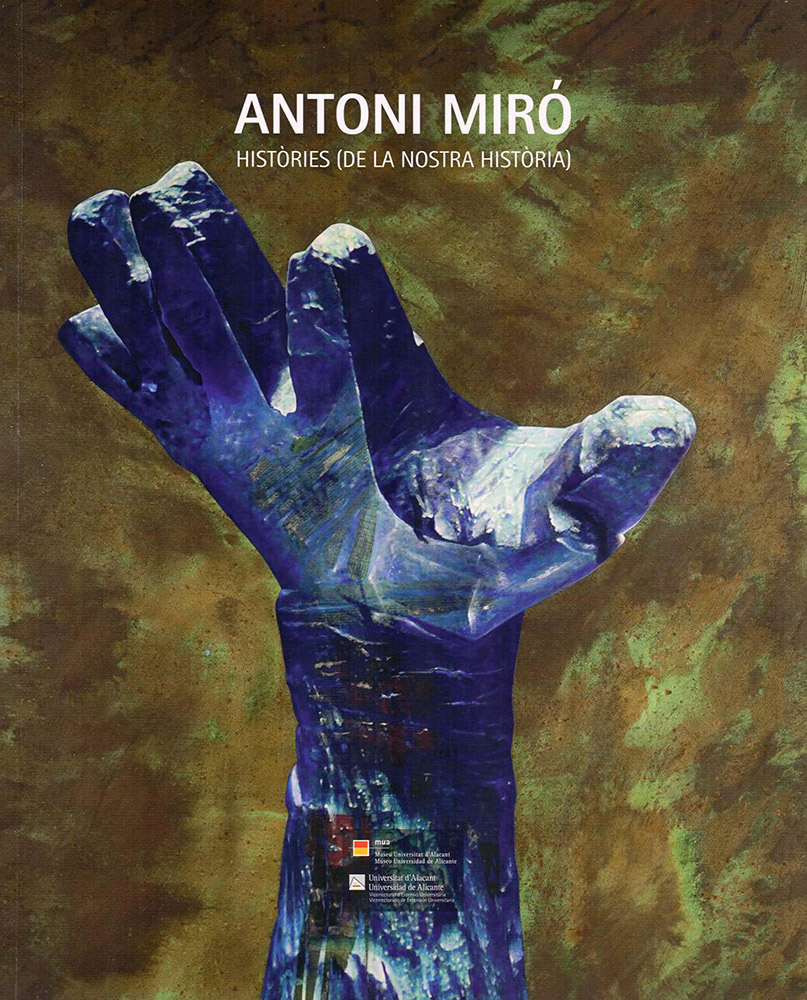The book of deeds
Daniel Giralt-Miracle
I do not know how many works Antoni Miró has made since he dedicated to art, but even ignoring it, he clearly has a very prolific career, changing the topics and performances. However, a personal touch and a constant obsession can be found in his creations which led Joan Francesc Mira to brilliantly define Miró as a “producer of fantasies and suggestions.”
Antoni Miró is part of that generation of painters of our country that, tired of sterile informality overexploited by the great masters of abstraction, did not fall into the mannered figuration of Cubist or Expressionist roots (the so called new figuration) but opened the eyes to reality to chronicle what he saw to denounce war, racial discrimination, men exploitation, the hegemony of empires (economic or military), the demolition of our planet, the misery of our own history. As he perfectly explained to Joan Antoni Vicent Hernandez (Avui, 08.08.1976): “I paint what I don´t like.”
Certainly, in most of cases and according to the old Latin sentence verum, bonum et pulchrum, the art has been associated with the idea of beauty and goodness, but Miró has chosen to avoid pleasing aestheticism and he has preferred to perform an stark analysis of existence by using language that has nothing to do with the tradition of beaux arts but has a relation with the imagery that emerged from the modern media; media that, in general, provide a more mechanical rather than reflective view and, therefore, a colder and distant view. Thus, Miró’s painting became a manifesto, an analytical proposal in which, without falling into the clichés of pop art or the easy hyper-realism, art, society and modern times are integrated with a unique aesthetic being an accurately reflection of the view of Antoni Miró, an artist who “sees the reality and transforms it. It does it in three different and simultaneous ways: by making sense, by saving it from the everyday nature that shadows objects and people and by projecting his alternative world, which is the brainchild of the artist” as lucidly defined by Isabel-Clara Simó in the catalogue “Antoni Miró. Els ulls del pintor.”
If generationally, Miró is close to the Equip Crònica, Equip Realitat, of Genovès, Canogar... Conceptually, his approaches are different. He was neither educated in the traditional beaux art schools, nor schools of arts and crafts; nor participated in the circles promoting critical realism. He did not become connected to art groups in the city of Valencia and he did not share the philosophical and political speculation which resulted in so called “Cróniques de la realitat”. Miró belonged to (in fact had been one of the founders) the group Alcoiart, more isolated and less akin to aesthetic or ideological theories but he also accused the radical impact of social transformations taking place here and around the world and wanted to join the complaint which he did by a direct and understandable language and becoming linked to the spirit of the Italian collective Gruppo Denunzia.
Miró’s critical thinking, as Joan Fuster stated, had two protagonists: the man and society so that shocks, contradictions, incongruities and mistreatments became became the focus of his work. An attitude that has not changed over the years because he has always claimed that the painting has a say and has to be immersed in the society we live; thus, it is the aim, more or less evident, that makes the difference over other ways of looking at reality.
Therefore, for Antoni Miró everything he wants to communicate is as much important as the way to communicate it as well as the background. That is why paintings, prints, reliefs, sculptures, posters, even pieces made with digital media can be found in his work but the use of these techniques cannot be divided in periods, as Romà de la Calle clearly stated, because Miró´s independence has always led him to use a different technique allowed by every specific time to express effectively his commitment to people and life, without transcendentalism, but with an explicit desire to complain, always with irony.
And his paint has been named awareness paint because it is not limited to self-reflection but seeks the aesthetic and ideological complicity of people who can think about Miró´s works. This is why it, probably, tends to schematism, to plastic resources simplification ad to borrow resources from the history of the art, cinema, comic, advertising or television in order to facilitate or start a dialogue with the audience Miró wants to interact with because, basically, every of his works meets a meditation or it is a lament or warning cry given that he is a painter of ideas who knows how to combine the ideological content and the artistic expression to achieve particular balance customizing his works; a creation, looking at it that way, I would dare to say it constitutes a new “Llibre dels fets” because, as a whole, it becomes a narrative of the most important events of his life, written in first person, as did king Jaume.
